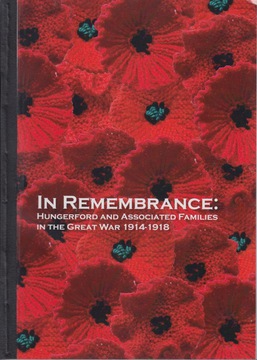OSBORNE, Francis Henry
| Service Number: | 2118 |
|---|---|
| Enlisted: | 31 December 1915 |
| Last Rank: | Private |
| Last Unit: | 35th Infantry Battalion |
| Born: | Booral, New South Wales, Australia, May 1886 |
| Home Town: | Morisset, Lake Macquarie Shire, New South Wales |
| Schooling: | Not yet discovered |
| Occupation: | Labourer |
| Died: | Royal Newcastle Hospital, Newcastle, New South Wales, Australia, 4 January 1959, cause of death not yet discovered |
| Cemetery: | Not yet discovered |
| Memorials: | Raymond Terrace War Memorial |
World War 1 Service
| 31 Dec 1915: | Enlisted AIF WW1, Private, 2118, 35th Infantry Battalion | |
|---|---|---|
| 24 Aug 1916: | Involvement Private, 2118, 35th Infantry Battalion, --- :embarkation_roll: roll_number: '17' embarkation_place: Sydney embarkation_ship: HMAT Anchises embarkation_ship_number: A68 public_note: '' | |
| 24 Aug 1916: | Embarked Private, 2118, 35th Infantry Battalion, HMAT Anchises, Sydney | |
| 15 Nov 1917: | Wounded AIF WW1, Private, 2118, 35th Infantry Battalion, While on patrol rifle discharged into hand - see biography account. | |
| 7 Jul 1918: | Discharged AIF WW1, Private, 2118, 35th Infantry Battalion, MD due to accidentally wounded hand |
Help us honour Francis Henry Osborne's service by contributing information, stories, and images so that they can be preserved for future generations.
Add my storyBiography contributed by Evan Evans
From: In Remembrance: Hungerford and Associated Families in the Great War 1914-1918
Pte Francis Henry OSBORNE
Regimental Number: 2118
Unit Name: 35th Battalion, 3rd Reinforcement
Religion: Roman Catholic
Occupation: Labourer
Address: Morisset, NSW
Age of Enlistment: 29 years and 7 months
Enlistment Date and Place: 31 December 1915, Newcastle, NSW
Next of Kin: Father, John Ward, Bulahdelah, NSW
Rank on Enlistment: Private
Embarkation Details: Unit embarked from Sydney, NSW, on board HMAT A68 Anchises, on 24 August 1916
Rank from Nominal Roll: Private
Unit from Nominal Roll: 35th Battalion
Campaigns Served: Western Front
War Service/Promotions: Disembarked Devonport, Plymouth, Devon, England 11 October 1916. He was in hospital for various periods with infections. He then spent a total of 13 weeks in France, in the Field, in three time periods. He was wounded in action (accidentally, self-inflicted without negligence), with a gunshot wound to his left hand, and had his 4th finger was amputated. In the Field, 15 November 1917, and admitted to hospital on 16 November 1917. Admitted to 8th Stationary Hospital 8 December 1917, discharged to Base on 27 December 1917. He proceeded to England 11 March 1918, and was sent to Weymouth, where the Army held soldiers no longer useful at the front, for a return to Australia.
Fate: Returned to Australia per HMAT A29 Suevic, 21 April 1918. He married Louisa Janet Hungerford, 31 August 1918, Church of St Laurence, Morisset, NSW.
Place of Wounding: Gunshot wound, hand, 15 November 1917, France.
Place of Death: 4 January 1958, Royal Newcastle Hospital, Newcastle, NSW
Place of Burial: Church of England Cemetery, Morisset, NSW
Medals/Citations: British War Medal; Victory Medal
War Memorial/Honour Roll: Bulahdelah District Roll of Honour, Bulahdelah, NSW
Statement of Evidence relating to injury:
(Signed) F.H. Osborne, Pte. 'A' Coy, 35th Battalion
'At about 8.30pm on 15 November 1917, I was proceeded to patrol duty. Cpl. Brown was 1/C of this party and there were 2 others besides myself. When about 100 yards from No 3 post we all left the trench. I was the last man out of the trench. About 10 yards from the main duck boards I fell into a shell hole and my rifle dropped out of my hand. I scrambled out of the shell hole and felt around for my rifle as it was dark. I felt the rifle with my hands and lifted it out of the shell hole with my left hand on the muzzle. Just as I was getting the rifle clear of the shell hole I heard an explosion and felt a sharp pain in my left arm. I did not ask or tell any members of the patrol to come back and help me out of the shell hole as it is an ordinary incident to fall in a shell hole. The Corporal and two other men came back on hearing the discharge of the rifle. They took me to Coy. HQ from where I was assisted to the aid post. I know that when on patrol duty the magazine must be loaded with one cartridge in the chamber, cocking pieces in the firing position and safety catch to the rear. I had six rounds in the magazine and one in the chamber, as the rifle went off I must have forgotten to pull the safety catch to the rear when I loaded the rifle at 11am this morning (15th). I have been in France 12 months and thoroughly understood my rifle.'









